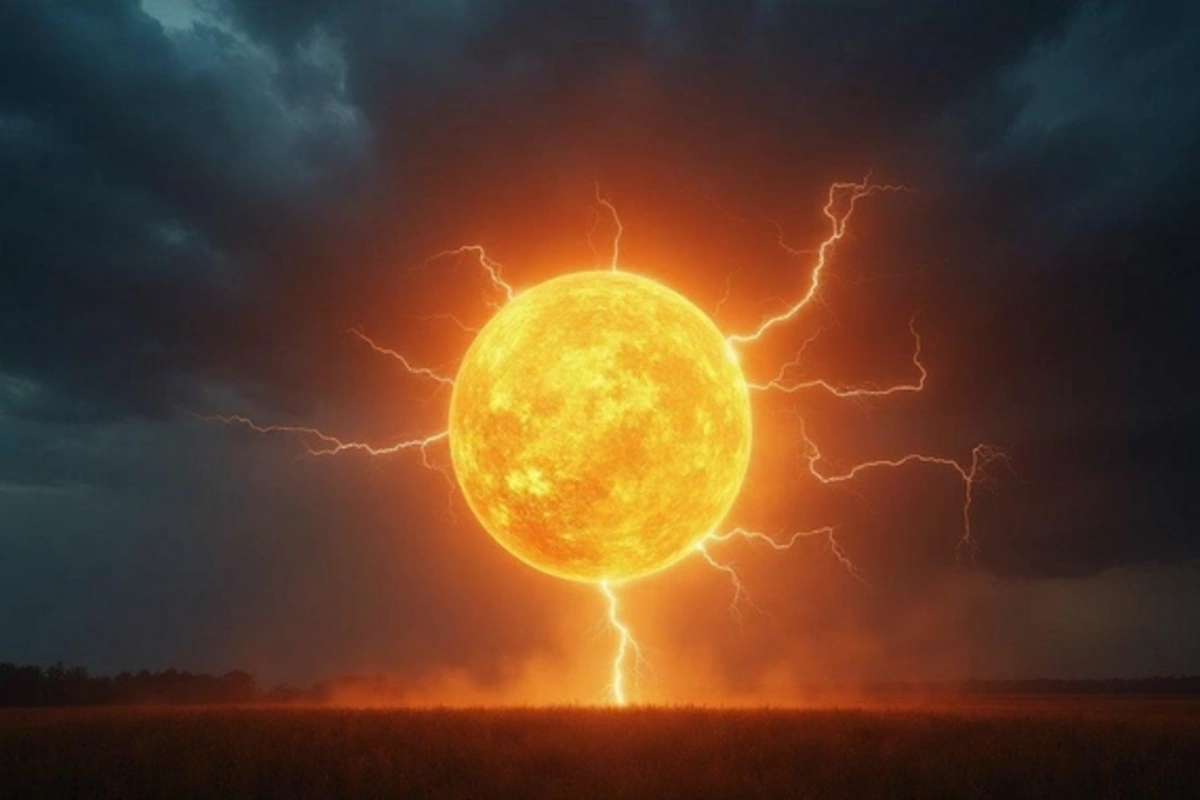03 Jun , 23:52
0

MYSTERY OF THE SKIES: SCIENTISTS ON THE PATH TO SOLVING THE SECRET OF BALL LIGHTNING
Ball lightning is one of the most mysterious atmospheric phenomena observed by humanity for centuries. Despite extensive eyewitness accounts, until recently science had no unified explanation for this rare phenomenon. Today, physicists are making decisive steps toward understanding the nature of ball lightning, relying on experimental data and computer modeling.
Ball lightning is a luminous spherical object with a diameter ranging from several centimeters to one meter. It can hover in the air, move along complex trajectories, penetrate into rooms through closed windows, and even be accompanied by sound effects or the smell of ozone.
The duration of ball lightning's existence usually ranges from a few seconds to a minute. According to data collected since the late 19th century, the object can disappear without a trace or explode, causing damage to the environment and equipment.
Historically, ball lightning was perceived as a mystical or supernatural phenomenon. However, with the development of physics in the 20th century, scientists began to look for scientific explanations. In the 1960s, hypotheses were put forward about the plasma nature of the phenomenon and its connection with thunderstorm discharges.
One of the early theories was the assumption that ball lightning is a form of stable plasma powered by microwave radiation. Other theories linked it to chemical oxidation reactions occurring in the air.
In 2012, Chinese scientists recorded a spectral analysis of presumed ball lightning for the first time. Researchers from Northwestern Polytechnical University (Xi'an) used high-speed video recording and a spectrometer to analyze the phenomenon that occurred after lightning struck the ground. The spectrum revealed atoms of silicon, iron, and calcium, which may indicate the participation of soil particles in its formation.
In 2014, a group of Russian physicists led by Professor Gennady Andreev (Institute of General Physics, Russian Academy of Sciences) modeled ball lightning in laboratory conditions using an electrical discharge in an electrolyte solution. The resulting structures existed for several hundred milliseconds and resembled real observations.
Since 2020, the number of publications on modeling ball lightning using quantum and nonlinear physics has increased. One direction is the theory that the phenomenon is formed by an unstable standing electromagnetic field maintained by ionized particles in the air. Such models allow describing the stable behavior of the object but do not yet provide a complete explanation of its movement and interaction with objects.
At present, there is no single generally accepted theory that fully explains all aspects of ball lightning. However, the scientific community is getting closer to forming a comprehensive approach that combines elements of plasma physics, chemistry, and electromagnetism.
Research continues in a number of countries, including the USA, Russia, Germany, and China. Scientists note the importance of further observations, including those using satellites, sensors, and automatic cameras in areas with high thunderstorm activity.
Ball lightning remains a rare but real phenomenon that arouses interest both among specialists and the general public. Modern research is gradually revealing the mysteries of this natural phenomenon, allowing us to hope that in the near future we will receive a scientifically based explanation and, possibly, find practical applications for the discovered principles.